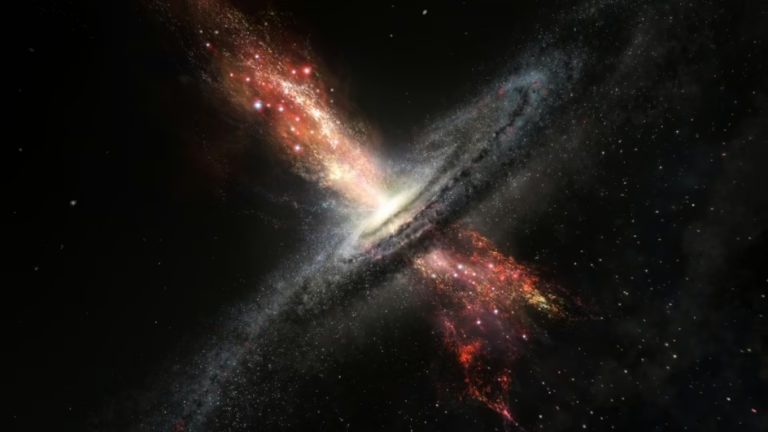Investigation of a galaxy over 12 billion light years distant reveals black holes might be smaller than previously estimated, prompting a rethink of cosmic development theories.
Recent research indicates that so-called “supermassive” black holes might not be as colossal as once believed.
Astronomers revealed on Thursday that a detailed examination of a remote quasar-an intensely luminous and active galactic nucleus-showed the central black hole’s mass to be approximately one billion times that of our sun, which is only a tenth of earlier estimates.
This discovery was made by a collaborative team from the University of Southampton and European institutions, who studied a galaxy located over 12 billion light years away using cutting-edge instruments at the European Southern Observatory (ESO) in Chile.
Associate Professor Christian Wolf, speaking to ANU Reporter, emphasized that despite the quasar’s extraordinary brightness, the black hole’s mass was surprisingly modest, around one billion solar masses.
He further explained that contrary to expectations of rapid rotation, the black hole was actively expelling gas, propelled outward by the overwhelming force of intense radiation.
This black hole was initially identified in 2024 by Wolf and his team at the Australian National University (ANU).
Professor Seb Hoenig from the University of Southampton remarked that this finding addresses a long-standing puzzle in astrophysics.
“For years, we’ve been puzzled by the presence of fully developed supermassive black holes in very young galaxies shortly after the Big Bang, as there seemed insufficient time for them to reach such enormous sizes,” he told the Press Association (PA).
The research, published in Astronomy and Astrophysics, utilized Gravity+, an advanced instrument that merges light from four of the largest telescopes at ESO’s Very Large Telescope facility in Chile. The international team, including scientists from France, Germany, Portugal, and Belgium, examined the hot gas swirling into the black hole.
Their analysis suggests that powerful radiation is driving away much of the infalling gas, thereby limiting the black hole’s growth rate more than previously understood.
Professor Hoenig likened the phenomenon to a “cosmic leaf blower” operating at full throttle, where the intense radiation forcefully pushes away any material attempting to approach the black hole.
These insights could prompt a reevaluation of black hole measurement techniques and inspire revisions to existing models of how the universe evolves over time.























